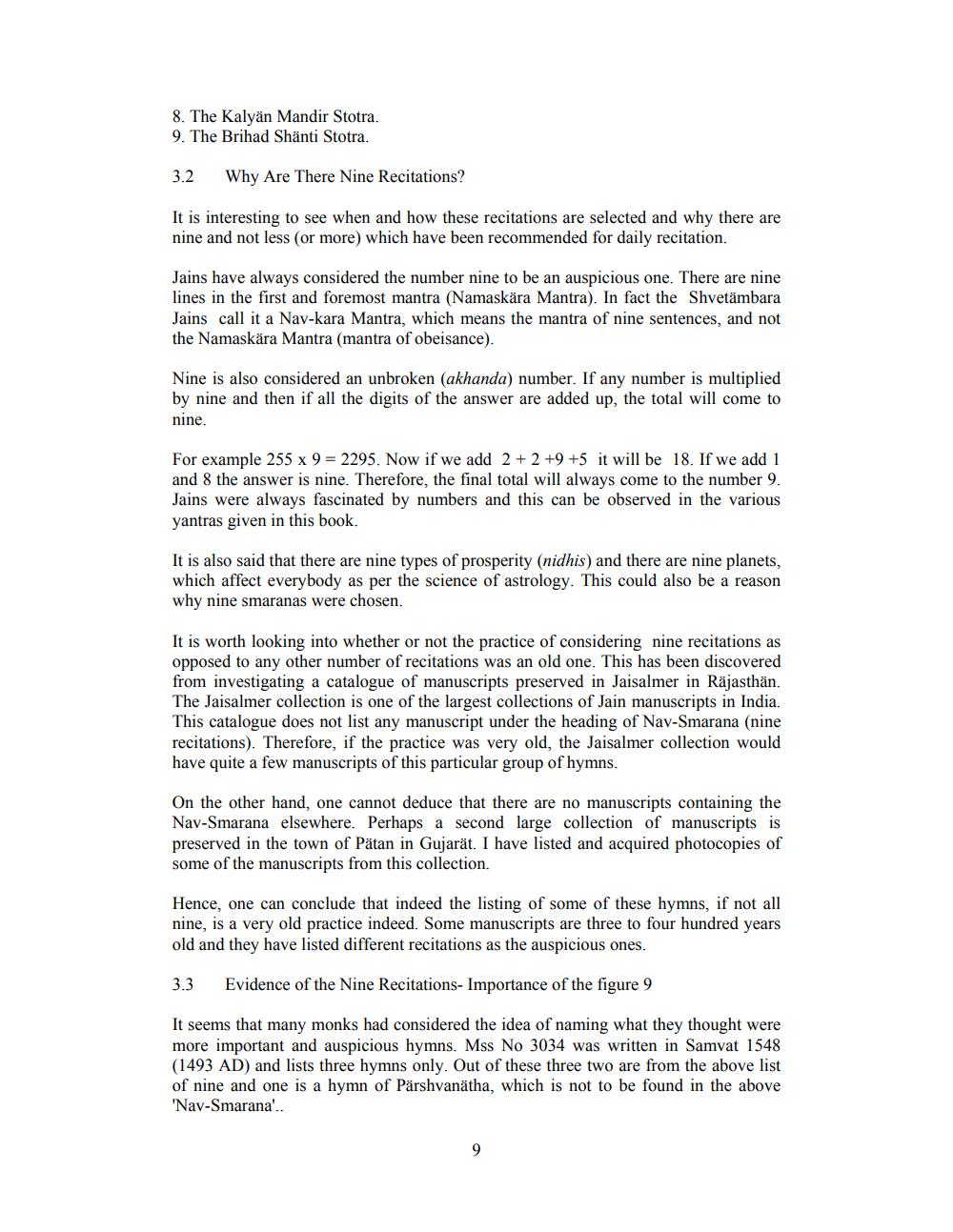________________
8. The Kalyan Mandir Stotra. 9. The Brihad Shänti Stotra.
3.2
Why Are There Nine Recitations?
It is interesting to see when and how these recitations are selected and why there are nine and not less (or more) which have been recommended for daily recitation.
Jains have always considered the number nine to be an auspicious one. There are nine lines in the first and foremost mantra (Namaskära Mantra). In fact the Shvetämbara Jains call it a Nav-kara Mantra, which means the mantra of nine sentences, and not the Namaskara Mantra (mantra of obeisance).
Nine is also considered an unbroken (akhanda) number. If any number is multiplied by nine and then if all the digits of the answer are added up, the total will come to nine.
For example 255 x 9 = 2295. Now if we add 2 + 2 +9+5 it will be 18. If we add 1 and 8 the answer is nine. Therefore, the final total will always come to the number 9. Jains were always fascinated by numbers and this can be observed in the various yantras given in this book.
It is also said that there are nine types of prosperity (nidhis) and there are nine planets, which affect everybody as per the science of astrology. This could also be a reason why nine smaranas were chosen.
It is worth looking into whether or not the practice of considering nine recitations as opposed to any other number of recitations was an old one. This has been discovered from investigating a catalogue of manuscripts preserved in Jaisalmer in Rajasthän. The Jaisalmer collection is one of the largest collections of Jain manuscripts in India. This catalogue does not list any manuscript under the heading of Nav-Smarana (nine recitations). Therefore, if the practice was very old, the Jaisalmer collection would have quite a few manuscripts of this particular group of hymns.
On the other hand, one cannot deduce that there are no manuscripts containing the Nav-Smarana elsewhere. Perhaps a second large collection of manuscripts is preserved in the town of Pätan in Gujarät. I have listed and acquired photocopies of some of the manuscripts from this collection.
Hence, one can conclude that indeed the listing of some of these hymns, if not all nine, is a very old practice indeed. Some manuscripts are three to four hundred years old and they have listed different recitations as the auspicious ones.
3.3
Evidence of the Nine Recitations- Importance of the figure 9
It seems that many monks had considered the idea of naming what they thought were more important and auspicious hymns. Mss No 3034 was written in Samvat 1548 (1493 AD) and lists three hymns only. Out of these three two are from the above list of nine and one is a hymn of Pärshvanätha, which is not to be found in the above 'Nav-Smarana'..




